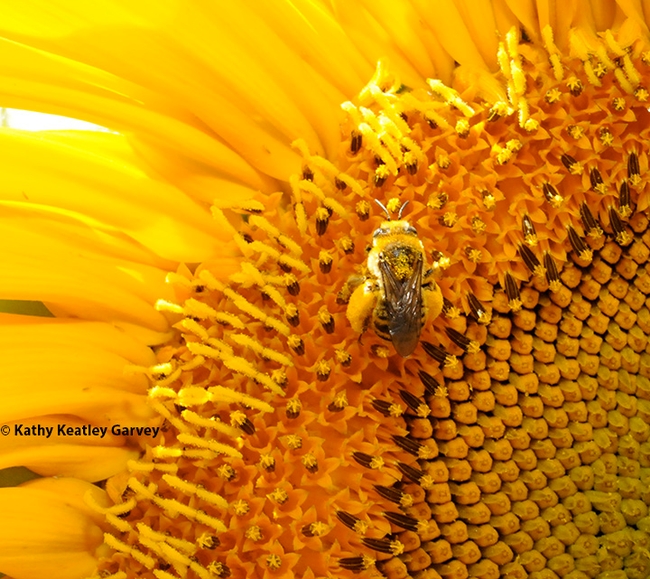
But wait until you watch the newly released PBS Deep Look video, "Why Do Sunflowers Face the Sunrise?" that spotlights the research of UC Davis and UC Berkeley scientists.
The bee was formerly known as Svastra obliqua expurgata. "But, all North American species formerly placed in genus Svastra are now placed in the genus Epimelissodes," Zavortink said. "So, the most current name for the bee is Epimelissodes obliqua expurgata."
Deep Look is a science video series that does amazing work exploring "big science by going very, very small." They utilize what they refer to as "macro photography and microscopy in glorious 4K resolution, to see science up close ... really, really close."
Viewers are raving about the sunflower video, and rightfully so! Some of the comments:
- Sunflowers are the suns of the land, making a day a bit more bright
- Bees with massive pollen britches is the cutest thing
- Pollen pants!
- Never knew sunflowers quit their rotation business once they bloomed. Beautifully done video, as always!
- I just love these Deep Look vids! Thank you guys for always putting out such high quality educational videos!!
- I always look forward to a new Deep Look video. This excellent clip is an example why. Thanks Deep Look
- This is probably your most gorgeous video.
- It's a flower that lives by the golden hours of the day every day.
- Another awesome video by Deep Look!
- Just as sunflowers dance with the sun, let your spirit buzz with joy and attract the sweetness of life like a bee.
- This plant got a better circadian rhythm than me.
- If you're lost and don't know which direction you're facing, use a sunflower to help direct you.
- Amazing video as always Deep Look team! Fascinating to see what millions of years of evolution can do. We must protect our precious planet and its inhabitants.
- Sunflowers point towards the sun because they are, in fact, the sun in disguise.
- Solar-powered plants
The link to the Deep Look video is here. The UC Davis research story by Andy Fell is here.
Attached Images:

